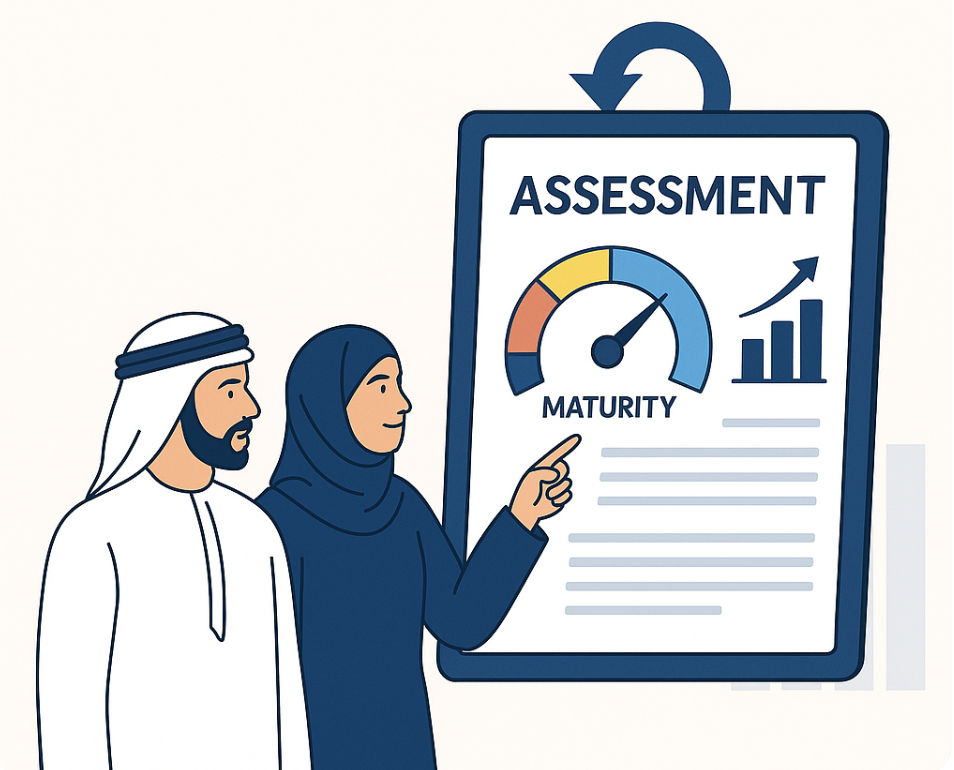There is a silent contagion in many organisations that once embedded, brings massive delivery inefficiencies and can quickly introduce unnecessary costs and delay to delivery teams. It’s called Conway's Law.
Conway’s Law suggests that any system designed by an organisation will reflect its communication structure. The TLDR is that if you’re not careful with how you structure your organisation and the way teams communicate with each other, you risk creating a set of incompatible, uncooperative siloes across your business.
While the academic explanation of Conway’s Law might seem somewhat abstract, its implications for businesses are profound and can lead to inefficiencies, misalignment, and stunted innovation. However, adopting Agile delivery approaches can mitigate these negative impacts, fostering more efficient, cohesive, and innovative teams.
Conway's Law, formulated by computer scientist Melvin Conway in 1967, states, "Any organisation that designs a system (defined broadly) will produce a design whose structure is a copy of the organisation's communication structure." This principle underscores the intrinsic link between an organisation's internal communication patterns and the systems it creates. To fully grasp the significance of Conway's Law, it's essential to delve into its background, the nature of its occurrence, and its broader implications for organisations.
Background and Establishment
Melvin Conway introduced this concept in his 1968 paper, "How Do Committees Invent?" Conway observed that the structure of a system—whether it be software, a business process, or a physical product—mirrors the communication structures of the organisation that developed it. His insights came from studying the development processes of various organisations and noting consistent patterns: when teams were divided by communication barriers, the systems they produced were similarly fragmented.
Conway's work was initially met with some scepticism but gained recognition over time as empirical evidence accumulated. His observations have since been validated by numerous studies and real-world examples, reinforcing the idea that organisational design and communication patterns have a profound impact on the end products.
How Conway's Law Occurs
Conway's Law occurs due to the natural tendencies of human communication and collaboration. In any organisation, people tend to form communication channels that are influenced by their hierarchical and departmental structures. For instance, if an organisation has distinct departments for design, development, and testing, the product they create will likely have corresponding modules that reflect these departmental separations.
Several factors contribute to this phenomenon:
- Communication Barriers: Physical separation, departmental silos, and hierarchical layers can create barriers to effective communication. When teams cannot communicate freely and frequently, their outputs tend to be disjointed.
- Specialisation: Different departments often have specialised knowledge and focus areas. While specialisation can drive deep expertise, it can also lead to tunnel vision, where teams focus on their specific parts of a project without considering the whole.
- Coordination Challenges: Large organisations often face difficulties in coordinating efforts across teams. Misalignment in goals, timelines, and priorities can lead to fragmented and inconsistent products.
Impacts on Organisations
The impacts of Conway's Law on organisations can be profound and multifaceted:
- Fragmented Systems: When different teams work in isolation, they produce components that may not integrate seamlessly. This can result in a system with multiple disjointed parts, each reflecting the communication and collaboration dynamics of its respective team.
- Increased Complexity: Fragmentation leads to increased system complexity, making maintenance, updates, and scaling more challenging and costly.
- Inefficiencies: Siloed teams often duplicate efforts, resulting in wasted resources and inefficiencies. The lack of cohesive communication can lead to redundant or conflicting functionalities.
- Stifled Innovation: Innovation thrives on collaboration and the cross-pollination of ideas. When teams are siloed, opportunities for innovative solutions that arise from diverse perspectives are lost.
- Delayed Delivery: Integration issues and misaligned efforts can cause significant delays in project delivery. Teams may struggle to bring together their disparate parts into a cohesive whole, leading to extended timelines.
- Higher Costs: Inefficiencies, delays, and increased complexity inevitably lead to higher costs. The resources required to manage and mitigate these issues add to the overall expense of the project.
Agile Delivery Approaches to the Rescue
Agile approaches, particularly the Scrum Framework, offer a powerful antidote to the negative impacts of Conway's Law. By fostering better communication and collaboration, Agile can help align your organisational structure with your product design, leading to faster delivery, lower costs, and more efficient, happier teams.
i. Enhanced Communication with Scrum Events
Daily stand-ups (known as Daily Scrums), Sprint Reviews, and Sprint Retrospectives are essential Scrum events that enhance communication and collaboration. These regular touchpoints ensure that team members are constantly aligned, reducing the risk of miscommunication and ensuring that everyone is working towards the same goals.
ii. Cross-Functional Teams
Scrum promotes the formation of cross-functional teams, which include members with varied skill sets working together towards a common objective. This structure naturally breaks down silos, encouraging collaboration and innovation. Cross-functional teams are more likely to create cohesive, well-integrated solutions that reflect a unified vision rather than disjointed parts.
iii. Backlog Refinement
Backlog Refinement sessions ensure that the Product Backlog is constantly reviewed and prioritised. This ongoing process ensures that the team is always focused on delivering the highest value items, which can help in reducing waste and increasing efficiency.
Conclusion
Conway's Law highlights a critical aspect of organisational design that can profoundly impact your business's efficiency and success. By understanding and addressing the negative impacts of this principle, you can create a more streamlined, innovative, and cost-effective organisation. Adopting Agile delivery approaches, particularly the Scrum Framework, can transform your communication structures, leading to better-aligned products and happier, more productive teams.
Call to Action
Are you ready to overcome the negative impacts of Conway's Law in your organisation? Book a free appointment with Agility Arabia to explore how we can help you implement Agile within your teams and drive your business towards success.
By integrating these Agile practices, your organisation can turn the challenges posed by Conway's Law into opportunities for growth and innovation. Let Agility Arabia guide you on this transformative journey.




